Imagine walking through a vibrant forest, filled with birds singing all around you. You see birds flying and hear their beautiful sounds. Have you ever thought about how many birds live on our planet? Scientists are still debating the exact number.
Recent studies suggest there are between 50 billion to 400 billion birds worldwide. This big range shows how hard it is to count so many small, fast-moving birds. From hidden forest birds to city pigeons, counting them is a big challenge.
These estimates mean there could be 6 to 50 birds for every human. This shows how successful birds have been over millions of years. They have been on Earth since their ancestors were around.
Key Takeaways
- The global bird population is estimated to range from 50 billion to 400 billion individuals.
- Counting the billions of small, mobile birds across the world is a significant challenge for scientists.
- Estimates suggest there are 6 to 50 birds for every human on Earth, reflecting the remarkable abundance of avian life.
- Determining an exact global bird count remains elusive, but recent studies have provided a range of estimates.
- The diversity and distribution of birds make a comprehensive census a complex and ongoing endeavor.
Estimating Global Bird Populations
Figuring out how many birds there are worldwide is a big task. Scientists use different bird census methods to get data. They take aerial photos of big groups of birds and split them up to guess the total. They also use citizen science data from places like eBird.
But, avian population modeling and bird monitoring techniques have big challenges. It’s hard to track where different bird species live and move around the globe. There’s also not enough data in some places. And, the numbers we get might not always be exact.
“The study quantifies uncertainty in estimates and provides wide ranges of possible populations for thousands of birds.”
Even with these problems, scientists keep working together with regular people. They use strong methods and lots of data to understand bird populations better. This helps us see how many birds are out there.
Bird Species Diversity
The global avian biodiversity shows how diverse birds are on our planet. There are over 10,000 bird species alive today. This makes birds the most diverse group of land vertebrates. Their bird taxonomy shows how they’ve adapted and specialized to live in many places and roles.
But, the real count of new bird discoveries might be higher. Researchers are still finding new birds in remote areas. Some think a few hundred bird species may have gone extinct recently. This shows we need to keep a close watch on avian biodiversity and work to protect it.
“The evolution of bird skulls following the asteroid impact that led to the extinction of dinosaurs showed deceleration in morphological changes.”
Studying bird and dinosaur skulls shows dinosaurs changed faster than birds. This means the bird species richness today might have grown more slowly than dinosaurs did.
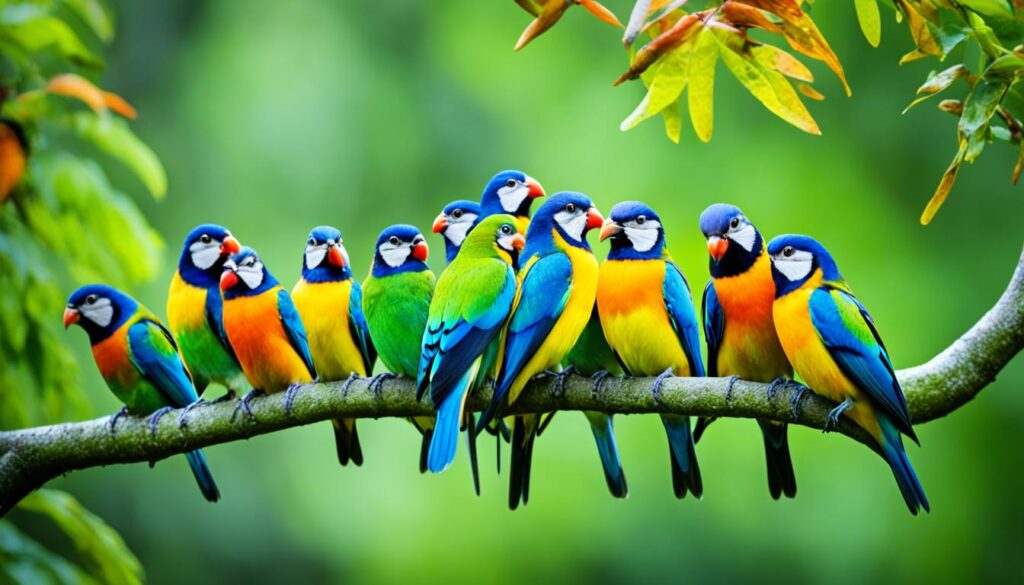
Still, birds are incredibly diverse, filling many ecological roles. From colorful tropical birds to seabirds and raptors, their variety shows their resilience and adaptability. The bird species richness on Earth is a sign of their amazing nature.
Most Abundant Bird Species
The world of birds is full of different species, but some are more common than others. The domestic chicken leads with about 22 billion birds worldwide. In Africa, the red-billed quelea is the most common wild bird, with over 1.5 billion birds.
House Sparrow and European Starling Populations
The house sparrow and European starling are also very common, with 1.6 billion and 1.3 billion birds, respectively. These dominant avian species live in many places and adapt well to different environments.
These birds are able to live in changing environments and with human activities. But, we need to keep an eye on their numbers because they can change and face threats.
“The abundance of certain bird species serves as an indicator of the overall health and balance of the ecosystem. Monitoring these abundant bird populations can provide valuable insights into the state of the environment and guide conservation efforts.”
Understanding the most common bird species and their numbers is key to protecting them. This knowledge helps us make plans to keep these amazing birds safe.
Rarest Bird Species
There are over 50 billion birds worldwide, but many are rare and face extinction. About 1,180 bird species, or 12%, have fewer than 5,000 individuals. This includes the great spotted kiwi and Javan hawk eagle, among others.
Critically Endangered and Vulnerable Species
Endangered bird species are a big worry. Only about 1,000-2,000 Golden Pheasants are left in the world. The Cebu Flowerpecker has only 105 individuals left. The New Caledonian Owlet-Nightjar has less than 50 birds and no conservation efforts.
In 2019, there were about 50 mature Imperial Amazons left in the wild. Some birds, like the Blue-eyed Ground-Dove, were rediscovered in 2015 with just 12 individuals. The Kakapo, a parrot, had only 50 in the wild by the 1990s but conservation efforts have helped increase their numbers.
The Rufous-headed Hornbill and others face threats like habitat loss and low breeding rates. The South Philippine Dwarf Kingfisher was spotted for the first time in 130 years, showing the challenges in monitoring and conserving these birds.

Conserving endangered birds is key to keeping our ecosystems balanced. These rare species are vital for the health of our environment. Protecting them helps keep our planet’s bird diversity rich.
How many birds?
Range of Estimates: 50 Billion to 430 Billion
Recent studies have given us a wide range of numbers for the world’s birds. They estimate between 50 billion and 428 billion birds. This big range comes from the challenges of counting so many different bird species.
Even though we can’t pinpoint an exact number, research points to a range of 50 billion to 430 billion birds. This shows how hard it is to count all the birds in the world. It also points out the need for more research and data.
“The real number of bird species is estimated to be around 18,000 to 20,000, significantly higher than current estimates.”
Citizen science projects like the eBird database have greatly helped with bird data. They cover over 92% of all known bird species. This data, along with scientific studies, can help us better understand bird populations worldwide.
As we face environmental challenges, knowing about the world’s birds is key for conservation. By improving our estimates and tracking trends, we can better protect nature and understand how we affect bird habitats.
Combining Professional and Citizen Science Data
Researchers used a special way to figure out how many birds there are worldwide. They looked at data from groups like Partners in Flight, the British Trust for Ornithology, and BirdLife International. They also used data from people who love birds, through the eBird database. This mix of data helped them get a clearer picture of bird populations, even with the ups and downs in the data.
Professional groups like MNCN and EBD have been tracking birds since the early 1900s. Citizen science projects like eBird and Proyecto AVIS give us the latest info on where birds live and how many there are. Putting these old and new data together lets researchers see how bird populations have changed over time.
They found that different groups have different types of data. Museums have info on specific birds in certain areas. Also, most bird sightings are in places with lots of people or protected areas. These facts are important to keep in mind when looking at the data.
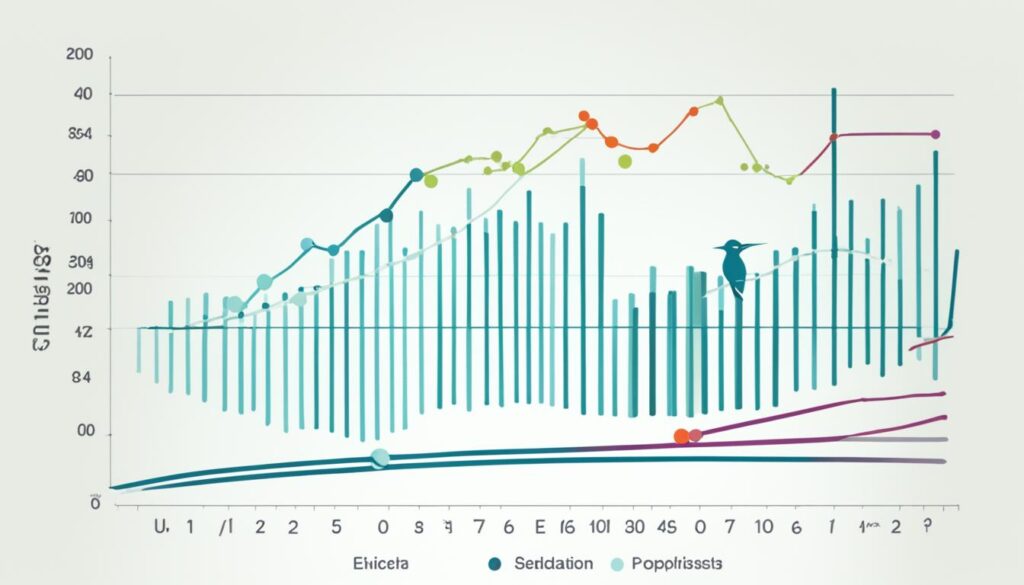
Even with its challenges, mixing professional and citizen science data is super helpful. It uses the best parts of both worlds. Scientists get to use their deep knowledge and wide reach, while everyday people share their love for birds in real time. This teamwork helps us learn more about birds and shows how important citizen science contributions are in ornithological research methods.
Domestic Chicken Population
The domestic chicken is the most common bird on Earth, with about 22 billion of them. They outnumber all wild birds combined. This shows how important chickens are in farming and agriculture worldwide.
Studies say that domestic chickens, along with ducks and geese, make up 70% of all bird biomass. This means they are a huge part of the bird population on our planet.
Chickens have been getting more common over time. By 1997, there were between 14.1 billion and 23.7 billion chickens. Now, there are about 23.7 billion. Every year, over 50 billion chickens are raised to meet our demand for them.
Chickens are great because they can adapt and are very productive. Humans have been raising them for thousands of years. They were first domesticated in Southeast Asia over 8,000 years ago. Chickens and their wild relatives, the red junglefowl, share a lot of their DNA.
The fact that chickens are so common shows how much humans have changed the bird world. As we learn more about birds, the domestic chicken will keep being a big topic of interest.
North American Bird Population Decline
The decline of bird populations in North America is a big worry. A recent study found a huge loss of 3 billion breeding adult birds since 1970. This means over 25% fewer birds in the U.S. and Canada.
This big drop in birds shows how fragile nature is. We need to keep watching and protecting birds more than ever. Experts say habitat loss, climate change, hitting windows, and cats are big reasons for this drop.
“Up to one billion birds die each year in the U.S. after hitting windows, and cats are estimated to kill more than 2.4 billion birds annually in the U.S. and Canada.”
Not all birds are losing numbers equally. Some, like grassland birds and aerial insectivores, have lost up to 53% of their numbers. This shows we need to focus on saving the most at-risk North American avian species.
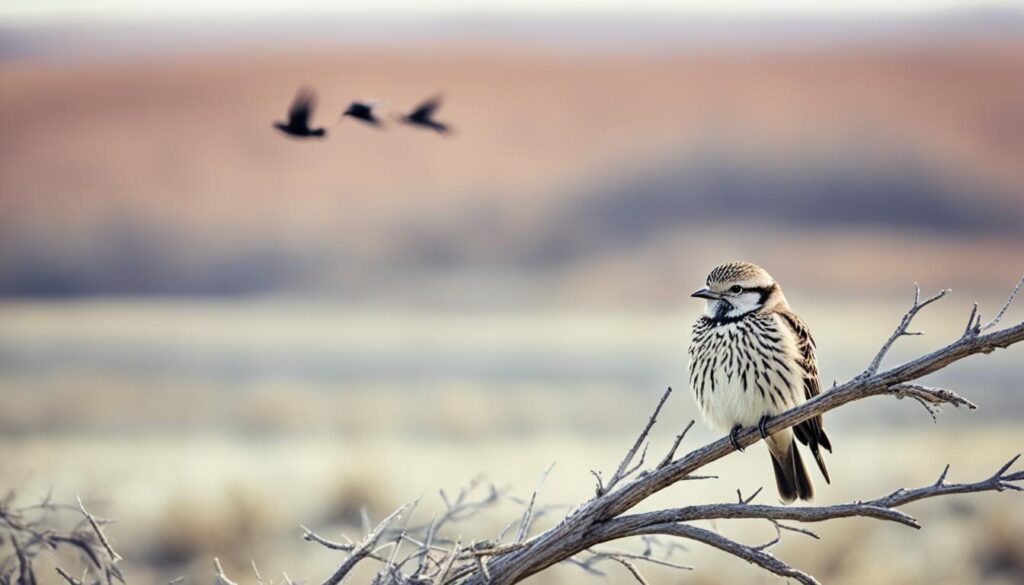
We need a wide-ranging plan to fix this. Simple steps like keeping cats inside, making windows safer, and planting native plants can help. Joining projects like Project Feederwatch and eBird also helps us understand and fight the bird population decline in North America.
Protecting our bird friends is crucial for our ecosystems. Working together, scientists, policymakers, and the public can help solve the conservation challenges facing North American birds.
Uncertainties and Variability in Estimates
This research on global bird populations shows the big uncertainties and variability in the numbers. The team worked hard to give a detailed look, but they found many limitations and gaps in the available data. These gaps are especially true for some regions and less-studied bird species.
There are big estimation challenges because of how hard it is to model bird populations. Things like migration patterns, breeding success, and death rates make it tough. That’s why the estimated number of birds ranges from 50 billion to 428 billion.
“Collectively, many historical and current large-scale surveys of colonially nesting birds rely heavily on aerial survey techniques, which can be prone to significant inaccuracies and biases.”
Research shows that observer estimates might be off by up to 29%. They often miss the mark by about 49% when compared to ground counts. Aerial surveys try to cover more ground but can be off by a lot. For example, they might miss up to 6,140% of gull colonies or 656% of Double-crested Cormorants.
These bird population data limitations and estimation challenges show we need a mix of professional and citizen science. This approach will help us understand the true number and behavior of birds worldwide.
Conservation Implications
Global bird populations show how fragile nature is. We must watch how human actions affect birds closely. The drop in North American bird numbers and the many rare and endangered ones show we need to act fast to save bird homes around the world.
Fragility of Nature and Monitoring Impact
This article shows the big challenges birds face. Since 1970, 3 billion breeding birds have vanished in North America. Human actions cause millions of bird deaths every year. Ongoing monitoring and data collection will be crucial for informing effective conservation strategies and mitigating the threats to avian biodiversity.
- 1,093 bird species protected under the Migratory Bird Treaty Act
- 89 bird species listed as threatened or endangered under the U.S. Endangered Species Act
- 342 species listed as Birds of Conservation Concern
These numbers show the big efforts to save birds, but the problem is huge. Continued monitoring and research will be crucial for understanding the complex interplay between human activities, environmental factors, and the resilience of bird species.
“The estimates of rare and endangered species, as well as the observed declines in North American birds, underscore the need for continued efforts to protect avian biodiversity and mitigate threats to their habitats.”
By seeing how fragile nature is and watching our impact, we can make better plans to save birds. This way, we can aim for a future where birds are common, not rare.
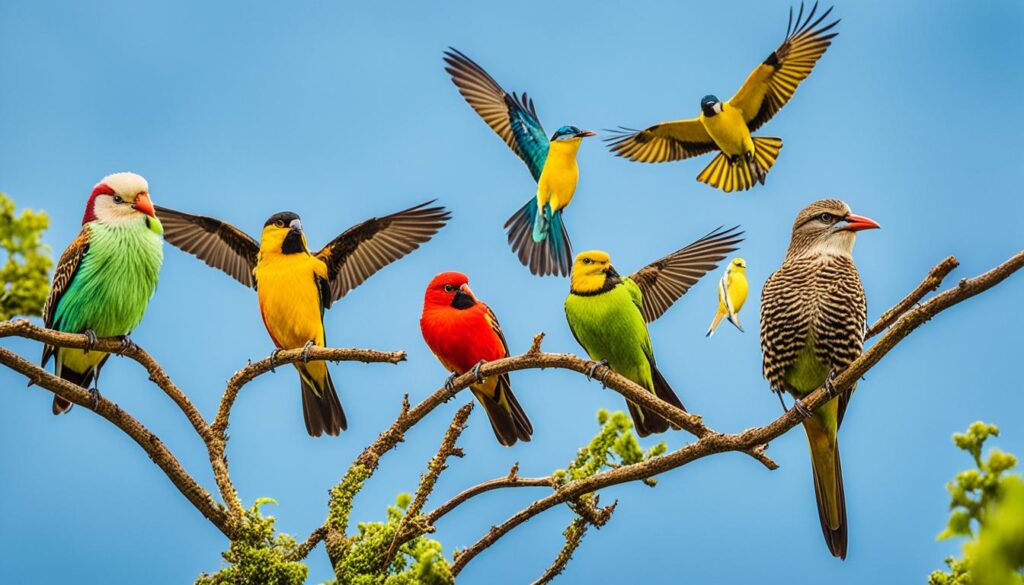
Future Population Monitoring
This global bird population study has given us a key baseline for tracking birds in the future. By using both professional and citizen science data, researchers have shown a way to keep an eye on bird numbers and where they live. This method can get better and cover more species over time.
We need to keep collecting bird population tracking and avian census methods data from many sources. This will help us understand the health and conservation data collection of birds worldwide. A mix of methods will help spot new threats, check how well conservation works, and make better policy for protecting birds.
“By combining professional and citizen science data, the researchers have demonstrated a methodology that can be refined and expanded over time to better understand trends and changes in the abundance and distribution of bird species worldwide.”
As the world faces more environmental challenges, we need strong and flexible ways to watch over bird populations. The study’s findings give us a good start for protecting the world’s bird diversity. This will help keep these important parts of nature healthy for the future.
By working together, scientists, conservation groups, and citizens can use what we’ve learned from this study. We can track bird populations, refine avian census methods, and collect conservation data. This will help us better understand and protect these amazing birds.
Conclusion
This study gives us a deep look into the world of birds, from the most common to the rarest. It shows the hard task of counting birds because they move a lot and live in many places. Researchers think there are between 50 billion to 428 billion birds, showing the challenges they face.
The study highlights how fragile nature is and why we must keep watching and protecting birds. Climate change and losing their homes threaten many bird species. This study reminds us to save these important parts of our world.
This research helps us understand how birds live and what affects their survival. It gives us insights for future studies on birds. As we work to protect birds, this study shows the value of science and working together to solve big environmental issues.
FAQ
What is the estimated global bird population?
It’s hard to count all the birds in the world. Experts think there are between 50 billion to 400 billion birds. This big range comes from the challenge of counting so many small, moving animals. Also, we don’t have enough data from many places.
How many bird species are there in the world?
There are over 11,000 types of birds worldwide, most agree. But, this number might change. There could be birds we haven’t found yet, especially in hard-to-reach places. Also, experts might not agree on some bird types.
What are the most abundant bird species in the world?
The most common bird is the domestic chicken, with about 22 billion. Among wild birds, the red-billed quelea leads with around 1.5 billion in Africa. Other top birds include the mourning dove, American robin, and common pheasant.
What are some of the rarest and most endangered bird species?
About 1,180 bird species, or 12% of all, have fewer than 5,000 birds left. This includes the great spotted kiwi and Javan hawk eagle, which are almost gone. The Seychelles kestrel is another example, with less than 100 birds left.
What are the challenges and uncertainties in estimating the global bird population?
The wide range of estimates shows how hard it is to count birds. Challenges include their movement and where they live, gaps in data, and the quality of the information we have. We need more monitoring and data to get a clear picture of bird populations.
How are researchers combining professional and citizen science data to estimate bird populations?
A recent study used a new method. It mixed data from experts with info from people who love birds, through eBird. This way, they got a better idea of how many birds there are, despite the challenges and uncertainties.
What is the current trend in North American bird populations?
A 2019 study found that North America lost 3 billion breeding birds since 1970. This shows we need to keep watching and protecting birds and their homes.
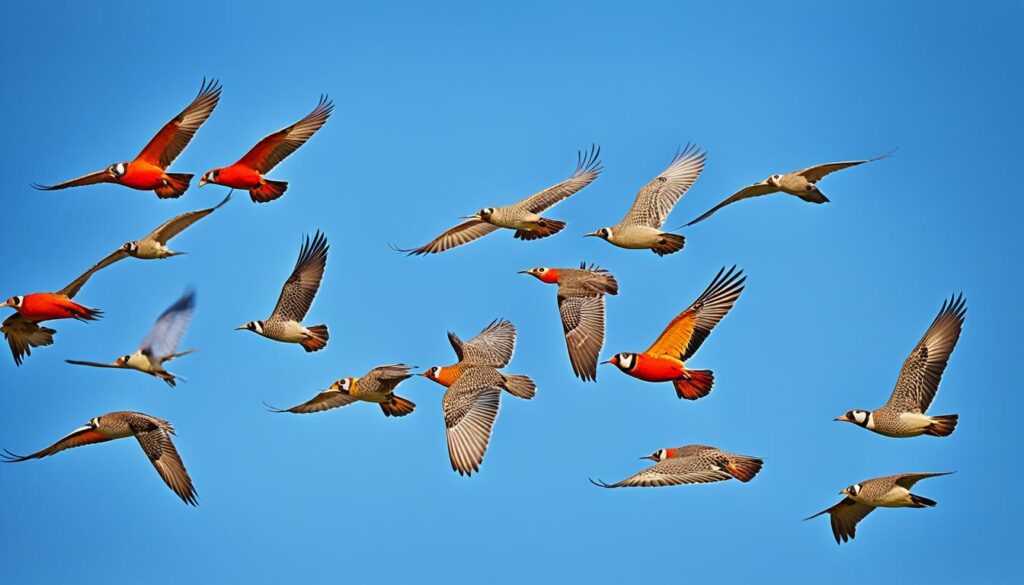

I’m extremely impressed with your writing skills and also with
the layout to your blog. Is this a paid theme or did you
customize it yourself? Either way stay up the excellent quality writing,
it is uncommon to see a great weblog like this one today.
Lemlist!
аккаунт для рекламы продать аккаунт
магазин аккаунтов социальных сетей маркетплейс аккаунтов
гарантия при продаже аккаунтов маркетплейс аккаунтов соцсетей
заработок на аккаунтах маркетплейс аккаунтов
магазин аккаунтов социальных сетей магазин аккаунтов
купить аккаунт с прокачкой https://kupit-akkaunt-top.ru/
маркетплейс аккаунтов продажа аккаунтов соцсетей
Buy and Sell Accounts Account Sale
Gaming account marketplace Buy Account
Accounts market Account Buying Service
Buy accounts Accounts market
Find Accounts for Sale Buy and Sell Accounts
Account Acquisition Account Purchase
Account Market Account Store
Gaming account marketplace Purchase Ready-Made Accounts
Social media account marketplace Sell Pre-made Account
Gaming account marketplace Verified Accounts for Sale
profitable account sales account selling platform
account buying platform account market
verified accounts for sale secure account sales
sell account marketplace for ready-made accounts
find accounts for sale account trading service
marketplace for ready-made accounts buy pre-made account
purchase ready-made accounts account sale
account marketplace account trading service
buy accounts account purchase
accounts market account trading platform
account trading platform accounts for sale
buy accounts buy pre-made account
account acquisition account trading service
account market secure account purchasing platform
purchase ready-made accounts accounts for sale
account market find accounts for sale
account store social media account marketplace
gaming account marketplace best-social-accounts.org
buy accounts purchase ready-made accounts
buy and sell accounts website for selling accounts
online account store account exchange service
secure account sales secure account purchasing platform
account buying service accounts for sale
accounts market marketplace for ready-made accounts
account selling platform account trading
accounts marketplace online account store
account selling platform purchase ready-made accounts
account buying platform accounts marketplace
account trading https://accounts-marketplace.xyz/
sell accounts https://buy-best-accounts.org/
account market https://accounts-marketplace.live
account catalog https://social-accounts-marketplace.xyz
accounts for sale https://buy-accounts.space
online account store https://buy-accounts-shop.pro
buy accounts https://buy-accounts.live/
account trading accounts marketplace
website for buying accounts https://social-accounts-marketplace.live
площадка для продажи аккаунтов https://akkaunty-na-prodazhu.pro
продажа аккаунтов https://rynok-akkauntov.top
биржа аккаунтов https://kupit-akkaunt.xyz
магазин аккаунтов https://akkaunt-magazin.online
маркетплейс аккаунтов https://akkaunty-market.live/
маркетплейс аккаунтов kupit-akkaunty-market.xyz
маркетплейс аккаунтов https://akkaunty-optom.live/
биржа аккаунтов https://online-akkaunty-magazin.xyz/
продать аккаунт https://akkaunty-dlya-prodazhi.pro/
купить аккаунт https://kupit-akkaunt.online
buy facebook ads manager https://buy-adsaccounts.work
buy facebook accounts for advertising https://buy-ad-accounts.click
buy facebook ads account fb accounts for sale
buy account facebook ads https://buy-ads-account.click
buy aged fb account buy aged facebook ads account
facebook accounts to buy buy account facebook ads
facebook ads account for sale https://ad-account-for-sale.top
buy aged fb account https://buy-ad-account.click
buying fb accounts facebook ad account buy
buy verified google ads accounts https://buy-ads-account.top
old google ads account for sale buy account google ads
buy facebook ads account https://buy-accounts.click
google ads account for sale https://ads-account-for-sale.top
buy aged google ads account https://ads-account-buy.work/
buy google ads agency account https://buy-ads-invoice-account.top
google ads agency accounts buy account google ads
buy google ads verified account google ads account seller